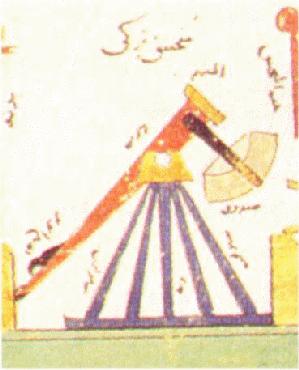 Black Camels and Blazing Bolts: The Bolt-Projecting Trebuchet in the Mamluk Army
Black Camels and Blazing Bolts: The Bolt-Projecting Trebuchet in the Mamluk Army
By Paul E. Chevedden
Mamluk Studies Review, Vol. 8:1 (2004)
The Mamluks pioneered the use of gunpowder ordnance, but their principal piece of heavy artillery was “the crushing, demolishing trebuchet”. In their campaigns of conquest, the Mamluks used substantial batteries of trebuchets, and Mamluk military science produced the only major technical treatise on the construction and operation of this form of artillery. The trebuchet was the most powerful form of mechanical artillery ever devised. It consisted of a long tapering beam which pivoted near its butt-end around an axle mounted on top of a framework. At the end of the long arm of the beam, a sling was attached which held the missile. This was designed to open when the beam’s motion and position reached the desired state for discharge.
To launch a projectile, the beam—equipped with pulling-ropes at its short end—was set in a horizontal position. The operator of the machine readied the machine for launch by placing a projectile in the pouch of the sling. The sling had two ropes: one attached firmly to the end of the beam and the other looped over an iron prong extending from the tip of the beam. The alignment of the prong and the length of the sling were crucial to achieving maximum range. Human muscle force was applied to the pulling – ropes by a team of men — or, in some cases, women — while the operator guided the missile through the initial phase of the launch cycle. When the operator released the sling, a sudden surge of power was imparted to the beam, as the maximum force exerted by the pulling-crew took full effect. This action propelled the throwing arm skyward and allowed the looped end of the sling to fly free, thus hurling the missile from the sling.
